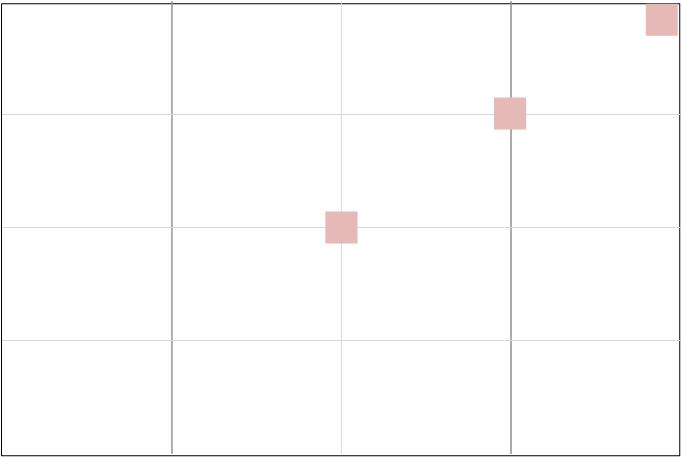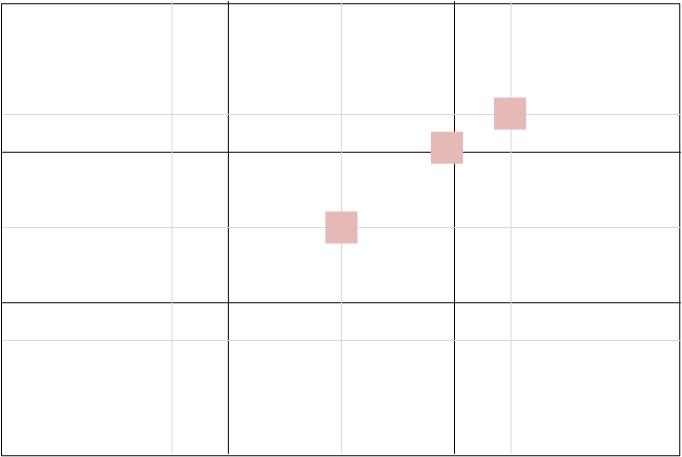Introduction
The Meyer-Optik Görlitz Trioplan 50mm f/2.9 is a legendary vintage lens from the 1930s, known for creating dreamy background blur with soap bubble bokeh. I’ve been very curious about this lens and now I have one to test and share my experience with you.
This MOG Trioplan 50mm f/2.9 is a lens with a, once upon a time, much-used formula, the Cooke triplet. It consists of two biconvex lenses on the outer edges and a biconcave lens in the middle.
This seemingly simple design offers some surprising characteristics that have attracted both manufacturers and photographers for decades. Let’s delve deeper and explore what makes this lens so special!
![]() I tested this lens on a 46 Mp Nikon Z 7II (Sample images with full-frame Nikon Zf and APS-C Nikon Zfc)
I tested this lens on a 46 Mp Nikon Z 7II (Sample images with full-frame Nikon Zf and APS-C Nikon Zfc)
 You can see this review as a YouTube video here!
You can see this review as a YouTube video here!
Sample Images










Most of the sample images in this review and many more can be found in higher resolution here.
Specifications
| Focal Length | 50mm |
| Angle of View | 47° |
| # of Aperture Blades | 12 |
| Max Aperture | f/2.9 |
| Min Aperture | f/22 |
| Min Focus Distance | 0.6 m |
| Filter Size | 35.5 mm |
| Lens Mount | Exakta, M42, Leica, Contax, Altix |
| Weight | 80 g |
| Size (D x L) | 48.5 x 35 mm (30 mm from mount bayonet) |
| Elements/Group | 3 / 3 |

| Buy the lens from: ebay.com, ebay.de, ebay.co.uk, ebay.com.au (affiliate links) Buy the AF adapter: Amazon, B&H from $369 (Affiliate links) Buy the manual adapter: Amazon, B&H for $37 (Affiliate links) |
Variations
There is a revival of this classic lens in black (instead of silver) named Meyer-Optik Görlitz 50mm f/2.8 II. The same lens formula manufactured in 2020 with the largest aperture of 2.8 instead of 2.9.
Handling
This Trioplan is a very compact and lightweight, fully mechanical lens. It’s built rigidly, reflecting the high standards of old-school German mechanical craftsmanship. The entire lens is constructed of metal and glass. The silver aluminium lens body feels solid and well-made.

Everything written on the lens barrel or the front is engraved and filled with paint; Name, serial number, aperture values, distance in meters and feet, and depth of field markings. The front of the lens features a red “V” engraving, signifying the German word “Vergütet” which simply translates to “Coated.” Additionally, a small triangle with a “1” inside indicates a premium (first-grade) lens build, typically found on models intended for export.

Variable distance clickable apertures are available at every full stop on the aperture ring that is quite small and is placed at front. The focusing ring is larger with easy-to-grip hill-valley design and boasts a massive 290° of smooth, dampened rotation with excellent resistance. The big focus throw helps with precise manual focusing. I’m particularly impressed by its smooth operation, as many older German lenses suffer from stiff focusing due to dried grease.

One interesting detail for Nikon users (though perhaps peculiar for others) is that the focusing ring direction follows Nikon’s convention for vintage lenses: infinity is on the left, and the minimum focusing distance (MFD) is on the right, seen from the camera, which is the opposite to most other lenses.

My copy of the lens is in Exakta mount, which is the most common mount. To adapt it to my Z cameras I used both a dumb EXA-to-Z adapter and the Techart autofocus Leica M-to-Nikon Z adapter. That requires an extra dumb EXA-to-Leica M adapter.
Optical Features
Sharpness (Infinity)
For the infinity sharpness test, we look at three areas of the image, center, mid-frame, and corner, see highlighted areas in the image below!


The center sharpness is a little soft, but completely acceptable, especially for a dreamy effect. The contrast is low though and needs some help in post processing. Stopping down improves the sharpness everywhere in the frame. While stopping down will improve midframe sharpness, it won’t reach peak performance until around f/16. However, the corners are quite weak and won’t improve significantly even when stopped down.
Sharpness (Portrait)
Let’s look at the points of interest for portraits: the center, the center’s inner periphery (1/3 rule intersection), and the center’s outer periphery (1/4th intersection).




It seems that this lens performs better at longer distances, as it suffers from softness and low contrast at portrait distance wide open at f/2.9. Stopping down to f/4 improves contrast significantly, and the center sharpness becomes very good. At f/5.6 the lens delivers very good sharpness in the center and good sharpness in the inner circle. However f/5.6 isn’t ideal for portraiture with this lens as it sacrifices the unique charm of its bokeh effect.
Sharpness (Close-up)
Close-up sharpness at f/2.9 is okay, but the contrast is very weak. However, this can be easily addressed in post-processing. Stopping down to f/4 reveals very good sharpness, which seems to be the peak performance aperture for close-up shots with this lens.







Lens Distortion
This lens excels in distortion control, delivering images with minimal distortion. One of key strengths of the Cooke Triplet design.

Vignetting
This is another strengths of this design. This lens delivers impressive results. Few, if any, modern lenses in this category can compete with it. Wide open, there’s a slight amount of vignetting, but it’s not bothersome. Stopping down one stop reduces vignetting to a virtually invisible level. You might wonder: how can a vintage lens outperform most, if not all, modern lenses in this category? Firstly, light falloff (vignetting) is influenced by several factors. These include the number of glass elements, air-to-glass surfaces, lens element thickness, and sensor distance. This vintage lens excels in these aspects compared to many modern lenses, contributing to its impressive performance. Secondly, modern lens designers often prioritise other qualities, tolerating some vignetting as it’s easily correctable in post-processing software or even in-camera.

- F/2.9: 1.3 EV
- F/4.0: 0.4 EV
- F/5.6: 0.3 EV
- F/8.0: 0.2 EV
Focus Shift & Aberrations
There is no focus shift but some spherical aberration is there. Longitudinal chromatic aberration is negligible.







There is a slight amount of Lateral chromatic aberration, which can be ignored as it is not very disturbing and in most cases it is not even noticeable.


Flare Resistance
One of this lens’s weakest points is its flare resistance. “Vergütet” or not, the flare resistance is terrible. The coating seems to have minimal impact on flare in situations with strong back lighting or direct sunlight. The lens exhibits severe flare across the spectrum, from ghosting to veiling glare. Although the flare and glare of this lens can be used creatively, it’s a subjective matter.
Coma
This Trioplan suffers from coma. It is not too bad but not so little that can be neglected either. The worse part is that it is resilient and does not disappear by stopping down one, two, or three stops. Actually, it does not completely disappear even if you stop down all the way to f/22.







Sunstars
Expecting nice sunstars from a lens with 12 aperture blades is a little too much. You can not not get decent sunstars with this lens.


Focus Breathing
This lens does suffer from severe focus breathing, there is no way you can go around it or ignore it. Not the best news for videographers.

Bokeh
Triplet lenses are classic soap bubble bokeh producers, and this Trioplan is a prime example of it. It delivers the distinct round shapes with defined lines around the edges.


However, the close focusing distance limits the size of these bokeh highlights.
But you have a few tricks up your sleeve to achieve larger bubbles, here are some tips:
- Use an APS-C camera: The smaller sensor size offers a 1.5x magnification factor, making the bokeh balls appear larger.
- You can also use an autofocus lens adapter. This allows you to get closer to your subject for bigger bokeh balls, in addition to offering autofocusing.
- Utilise dedicated extension tubes: These offer the most control over focusing distance, letting you create the largest bokeh effects possible.
I used the first two tricks myself. Look at the difference in bokeh balls size in these pictures! The windmill/background distance is the same for all pictures and the focusing ring is at MFD in the three cases, but I could go closer to the windmill using the AF adapter. For images 2 and 3, even the camera/windmill distance was the same.
This is a versatile lens, capable of creating not just the distinct “soap bubble” bokeh, but also soft, creamy out-of-focus blur or busy background blur. Here are some examples.




Conclusion
| I LIKE | AVERAGE | I DON’T LIKE |
| Vignetting control Chromatic aberrations correction Distortion correction Size Bokeh |
Center sharpness | Across the frame Sharpness Sharpness anywhere but the center Flare resistance coma Sunstars |
The Cooke triplet lens formula is a simple, yet revolutionary design for its time. It was the first lens system that allowed the elimination of most of the optical distortions at the outer edge of the image. This design has been used in various lenses by many manufacturers, including Agfa, Angenieux, Carl Zeiss Jena, Carl Zeiss Oberkochen, Kodak, Rodenstock, Schneider, Minolta, and of course, Meyer-Optik Görlitz. The Cooke triplet design, while groundbreaking for its time, has limitations in terms of image quality compared to more modern lens designs. The sharpness is weak in general and bad in corners, flare resistance is almost non-existent, coma while not a catastrophe never clears up, and it can’t produce any decent sunstars. So if the optimal image quality and optical performance are your priorities, this is not for you. You need to add some contrast in post and you could add some sharpness to get crispier images. Although I have boosted the contrast in all the images here, I did not sharpen any of them.
However, it has its strengths as we have seen and although it will not win any sharpness competition, it is good enough to produce pleasant dreamy images. Vignetting is better than any modern lens, distortion and chromatic aberrations are well corrected, it is very compact and well-build, and not least of all, it has that bokeh, which makes you doubt if you are awake or dreaming. If you’re more inclined toward the creative side of photography, especially if you appreciate the soap bubble bokeh effect, this lens could be a perfect fit for you.
Remember though, no lens can magically create soap bubble bokeh. You still need the right conditions and work with your composition to achieve the desired effect.
Writing articles like this one is both time-consuming and costs us a lot of money. If you found this article helpful and decided to buy one of these lenses, please consider using one of the affiliate links.
If you are not interested in buying any of the lenses, but you still found this article useful, interesting, or it saved you a lot of money, treat us to a coffee!
| Buy the lens from: ebay.com, ebay.de, ebay.co.uk, ebay.com.au (affiliate links) Buy the AF adapter: Amazon, B&H from $369 (Affiliate links) Buy the manual adapter: Amazon, B&H for $37 (Affiliate links) |
Alternatives
I’m only going to mention lenses regarding the bubble bokeh effect. Many vintage lenses can create bubble bokeh in the right conditions, it’s actually less about the lens and more a question of finding the right conditions. Even the most famous bubble bokeh lenses can’t produce bubbles in wrong conditions but some lenses are capable of doing it easier and with more pronounce shapes than others. The most famous ones are
Meyer-Optik Görlitz Trioplan 50mm f/2.8 II
All black, revival of the reviewed lens, produce from 2020, so it is substantially less years, optically same is the reviewed lens
New: Amazon, B&H $599 (Affiliate links)
Used: eBay from $300 (Affiliate links)
TTArtisan 100mm f/2.8
This an even more bubbly lens with larger bokeh bubbles and longer focal length, while better for portrait works, its 100mm focal length requires longer working distance. This is a lens produced first in 2023 with the same formula as the original MOG Trioplan 100mm f/2.8. See separate review article!
Buy new: TTArtisan Store for $155 (affiliate link) or $210 for the M-mount version (affiliate link)
Meyer-Optik Görlitz Trioplan 100mm f/2.8 II
Same optical lens as the TTArtisan 200/2.8 but built under the name of Meyer-Optik Görlitz. I do not see any reason to put extra $850 on this lens and I am not sure if this lens is produced anymore, but if you’d like to have this instead, here are the links
New: Amazon, B&H for $999 (Affiliate links)
Used: eBay from $800 (Affiliate links)
Fuji Fujinon 55/2.2
A fully plastic lens (except for glasses), much cheaper, not the same build quality as the Trioplan, but larger bubbles.
Buy from: ebay.com, ebay.de, ebay.co.uk, ebay.com.au (affiliate links)
Super Takumar 55/1.8
It can make bubbles but more difficult, beautiful bokeh nevertheless.
Buy from: ebay.com, ebay.de, ebay.co.uk, ebay.com.au (affiliate links)
Auto Mamiya/Sekor 55/1.4
Another vintage with beautiful bokeh that can produce nice bubbles.
Buy from: ebay.com, ebay.de, ebay.co.uk, ebay.com.au (affiliate links)
Meyer-Optik Görlitz Primotar 50/3.5
Buy from: ebay.com, ebay.de, ebay.co.uk, ebay.com.au (affiliate links)
Meyer-Optik Görlitz Trioplan 100/2.8
Original 100mm version of the Trioplan with large and bubbles, TTArtisan has made a modern version of it at much lower price, I recommend to get that one.
Buy from: ebay.com, ebay.de, ebay.co.uk, ebay.com.au (affiliate links)
Meyer-Optic Görlitz Oreston 50/1.8
This lens, while not a typical bubble bokeh lens, can produce them. Not as easily as the Trioplan though
Buy from: ebay.com, ebay.de, ebay.co.uk, ebay.com.au (affiliate links)
Pentacon 50/1.8
Another vintage lens with a very busy bokeh that in certain circumstances can produce bubbles, not as pronounced as the Trioplan though.
Buy from: ebay.com, ebay.de, ebay.co.uk, ebay.com.au (affiliate links)
More Sample Images











Most of the sample images in this review and many more can be found in higher resolution here.
Further Reading
- What camera gear and accessories do I use most frequently?
- Review: TTArtisan 100mm f/2.8 – A modern and affordable Trioplan?
- Review: Meyer-Optik Görlitz Domiplan 50mm 2.8
- Review of the overhyped Meyer Trioplan 100mm 1:2.8
- Review: Pentacon auto 50 mm f/1.8 Multi Coating
Support Us
Did you find this article useful or did you just like reading it? It took us a lot of time and money to prepare it for you. Use the Donate button to show your appreciation!
![]()

(Donations via Paypal or bank card)
This site contains affiliate links, for which I may receive a small commission if you purchase via the links at no additional cost to you. This helps support the creation of future content.









Bonjour
Thank you for testing another interesting bubble bokeh lens.
The 100mm f2.8 TT Artisan is probably the most reasonable option, as prices of the old lenses raised a lot these last years.
I use an old diapositive projector lens, adapted with a helicoid 52-42 and an M42 adapter (in my case to E-mount Sony) The Isco-Gottingen Projar 100mm f2.8 is a Cooke Triplet without diafragme.
It gives nice bubbles.
To stop it down I put an iron sheet in front of it with a drilled hole (holes from 5-9mm) You loose the bubbles, but get a sharper image with a dreamy vintage look.
Yes, I have mentioned that, if the focal length is fine then that TTA is more reasonable.
What an interesting innovation with the projector lens, share some pictures if you like.
Well, it’s not at all my invention.
On the Internet one can find a lot about it, and on this website; See Bastiank’s CZJ Visionar reviews of projector lenses.
You forgot to mention new,original copies of Trioplan,produced by Meyer Optik Gorlitz, i.e. 100/2.8 Mk1 and Mk2 and 50/2.9 Mk1 plus 50/2.8 Mk2.They are manufactured for majority of mirrorless mounts,but are significantly expensive – 900-1000 Euro per 50/100 lens.
I certainly did not forget to mention the newer 50/2.8 II, it is in the “Variations” section, just before the “Handling” section.
I left them out in the alternative sections though, which I maybe should have.
Excellent review, as always, Martin. Thank you very much for it.
I was thinking about what the difference between this one and the Domiplan would be. I have one decent copy of it and I’m very happy with it. It’s junk, I know that, it will eventually break for no reason, I also know that, but it’s several times cheaper than this one (you also said that in your review).
Also, if you really want funky bokeh, you should review the Vivitar Series 1 28 1.9. It’s so bad wide open, it’s good.
same applies to the Vivitar 28 f2.0 (Kiron) really wild, but after f5.6 quite decent, had that one at the end of the 80’s , now found one in a thrift shop for 5€ .
There are many soap bublers: Tomioka made 55 mm f1.4 ‘s Sears/Rikenon/ etcetera and they work nice.
Maybe the largest you can obtain with the Nikkor AFD DC 105 / 135 mm f2 when turning the DC ring to the max on the Front side.
I have three lenses which produce good soap bubbles.
TTA 100mm F2.8 which was mentioned in the article. It produces good bubbles wide open and cleans up nice stopped down. https://flic.kr/s/aHBqjAZddc
Minolta 58mm F1.4 is a classic fast normal that produces soap bubbles. The rings are only complete in the center due to vignetting. https://flic.kr/s/aHsmPjgPma
Nikon Nikkor-S 50mm F1.4 is another classic fast normal that produces soap bubbles. The bokeh is a little better behaved than the Minolta, but that is probably not the point here. https://flic.kr/s/aHBqjAbSVn
I love the idea of remaking highly regarded vintage lenses in the modern era. I wish we had options like this for the Zeiss 35/2.4 Jena Flek; Jupiter 9 85/2; Bokina 90/2.5; Olympus zuiko 100/2; Minolta 58/1.2; Zeiss 28/2 Hollywood, and some of the other big hit lenses, etc.
Very interesting lens, and it shaked my expectations how a triplet can produce more than acceptable results, at least when the conditions are ideal. Thank you!
The soap bubble bokeh disks in your test photos are from behind the plane of focus, where they usually are in normal situations.
Now, how about discs from light sources which are placed between the lens and plane of focus? My logic says that the rim brightness should reverse like it does with an apodization lenses like the Minolta STF 135/ f/2.8 T4.5.
What do you think?
Actually, I don’t know. I have to test that. It is somewhat interesting.